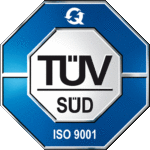There are several European Regulations and Product Directives related to our industry that may be of interest to you, especially if you are a Manufacturer.
Below, you can find a constantly updated list that you can use for quick reference.
EC Regulation 1935/2004 - Materials and articles that come into contact with or that are intended for contact with foodstuffs must be inert towards the foodstuffs.
EC Regulation 1935/2004 repeals the previous Directives 80/590/EC and 89/109/EC.
This regulation is designed to guarantee the efficient placing on the market of materials intended, directly or indirectly, for contact with foodstuffs. It also aims to uphold a high standard of human health protection.
This Regulation pertains to materials and articles, encompassing active and intelligent variants, collectively referred to as “materials and articles" in their finalised product form:
a) which are intended to be brought into contact with foodstuffs;
b) which are already in contact with foodstuffs and are intended for that purpose;
c) which can reasonably be expected to be brought into contact with foodstuffs or are likely to transfer their components to foodstuffs under normal or foreseeable conditions of use.
This Regulation shall not apply:
a) to materials and articles supplied as antiques;
b) to covering or coating materials, such as those covering cheese rinds, meat preparations or fruit, which form part of foodstuffs and may therefore be consumed with them;
c) to fixed public or private water supply installations.
Directive 2014/68/EU - PRESSURE EQUIPMENT (PED) - Provides mandatory guidance for the design, manufacture and conformity assessment of pressure equipment.
This Directive commonly referred to as PED is a Product Directive which regulates the design, construction, equipment and safe installation of pressure equipment.
This Directive mandates that pressure equipment or installations undergo assessment by a certification body to verify conformity with the conditions stipulated by the European Directives.
All installations of pressure equipment subject to the PED Directive must be communicated to ISPESL (Ministerial Decree no. 329704)
The following individual equipment and assemblies are included in the pressure equipment subject to the PED:
containers: enclosures designed and constructed to contain pressurised fluids such as compressors, autoclaves, condensers, gas or steam vessels, reactors, exchangers, LPG spheres, etc.
pipes refer to a pipe or assembly of pressurised pipes intended for the transport of fluids, including any pressurised components such as couplings, expansion joints, flanges, fittings, etc. This does not include, for example, water, oil or gas pipes (see following points);
pressure accessories: hydraulic valves such as gate valves, butterfly valves, spindle valves, vents, non-return valves, etc.
safety accessories: devices designed to protect pressure equipment against exceeding permissible limits; these include;
direct pressure-limiting devices: safety valves, rupture disk devices, collapsible rods, pilot-operated safety pressure relief devices (CSPRS);
limiting devices used to activate control systems, or close and deactivate equipment, pressure switches, thermostats, fluid level switches, measuring, control and regulation devices for safety (SRMCR);
assemblies: consist of various pieces of pressure equipment assembled by a manufacturer to form an integrated and functional whole
Directive 2014/34/EU - ATEX and EXPLOSIVE ATMOSPHERE - Equipment and protective systems intended for use in potentially explosive atmospheres
This European Union directive regulates equipment used in or related to explosive atmospheres.
The conventional name for the Directive is ATEX, which is derived from the words ATmospheres and EXplosibles.
The Directive requires ATEX certification for all products marketed within the Union, irrespective of their manufacturing origin or the prevailing regulations therein, provided they are installed in locations deemed hazardous to explosion, with limited exceptions to the following:
Medical equipment
Equipment and protective systems in which the explosion hazard originates exclusively from the presence of explosive substances or unstable chemicals;
Equipment for domestic use
Equipment intended for use in places where explosives are produced or stored
Marine equipment embarked, or otherwise offshore
Means of transport (excluding those for use in explosive atmospheres)
Equipment specially designed and constructed for use by the armed forces or for the protection of law and order. Dual-use devices are not excluded.
ATEX certification cannot be undertaken directly by the manufacturer (self-certification). Instead, it must be prepared, endorsed, and authenticated by an authorised certification body.
Directive 2000/14/EC - Noise emission by outdoor equipment
The purpose of Directive 2000/14/EC is to regulate through specific standards, the noise emission, marking and technical documentation of equipment intended for outdoors use In order to protect the health of persons who may be exposed to these risks.
This Directive requires the CE marking to indicate conformity, which in turn is asserted by the manufacturer with the EC Declaration of Conformity.
This Directive is applicable to outdoor equipment, as delineated in Articles 12 and 13, and as defined in Annex I. Directive 2005/88/EC only concerns machinery and equipment placed on the market or put into service as complete units for their intended use. Non-motorised accessories marketed or put into service separately are exempt, with the exclusion of hand-operated demolition hammers and hydraulic breakers.
The following are excluded from the scope of this directive:
all machinery primarily intended for the transportation of goods or passengers by road, rail, air, or inland waterway;
machinery specifically engineered and built for military and law enforcement purposes, as well as for emergency services.
Directive 2014/30/EU - ELECTROMAGNETIC COMPATIBILITY
This Directive is one of the oldest European single market directives adopted by the European Union.
The directive establishes uniform objectives concerning safety standards, ensuring that equipment endorsed by one EU member state is compliant for its designated use across all other EU countries.
The Electromagnetic Compatibility Directive does not stipulate any precise technical standards. However, it explicitly cites the necessity for manufacturers of electrical products to strictly adhere to the IEC/ISO EN standards referenced within..
This Directive imposes the use of the CE marking to signify conformity, a declaration made by the manufacturer through the EC Declaration of Conformity (prepared in accordance with standard ISO/IEC 17050-1:2004 and subsequent revisions, as detailed in Annex IV of the Directive). A copy of this declaration is retained in the technical file of the product, in accordance with Article 4 of Annex IV of the Low Voltage Directive. In instances involving a fixed installation, it is imperative to furnish the customer with a copy of the declaration of conformity.
The scope of this application encompasses all apparatus or fixed installations, governing the electromagnetic compatibility of equipment. Its objective is to safeguard the operation of the internal market by necessitating equipment compliance with a suitable standard of electromagnetic compatibility.
This Directive does not apply to the following:
equipment covered by Directive 1999/5/EC
aeronautical products,
radio equipment used by radio amateurs
equipment not designed to generate electromagnetic emissions surpassing a level conducive to the typical functioning of other equipment
equipment designed to operate without unacceptable degradation in the presence of the electromagnetic disturbances typically associated with its intended use.
Directive 2014/35/EU - LOW VOLTAGE - Covers electrical equipment designed for use within certain voltage limits
This Directive is also one of the oldest European Single Market Directives adopted by the European Union. The objective of the Directive is to ensure that electrical equipment endorsed by one EU member country complies with the requisite standards for its intended use across all other EU countries.
The Low Voltage Directive does not impose specific technical standards but explicitly refers to the IEC/ISO EN standards, which manufacturers of electrical products are obliged to strictly adhere to.
This Directive requires the CE marking to indicate conformity, which in turn is asserted by the manufacturer with the EC Declaration of Conformity.
The document covers electrical equipment with the following:
supply or output voltage between 50 and 1000 volts for alternating current (AC)
supply or output voltage between 75 and 1500 volts for direct current (DC)
This directive does not apply to the materials and phenomena listed in Annex II:
aTEX electrical materials (ATmosphères and EXplosibles) and for clinical and radiological use,
electrical parts regarding lifts and hoists,
electrical meters,
sockets and plugs for domestic use,
power supply devices for electrical enclosures,
radio interference,
special electrical materials, intended for use on ships, aircraft and railways.
EU Regulation 2017/745 - MD - Medical Devices
This Regulation pertains a fundamental revision of previous Directive regarding Medical devices is needed to establish a robust, transparent, predictable and sustainable regulatory framework which ensures a high level of safety and health whilst supporting innovation.
The MD Regulation covers the manufacture and placing on the European market of medical devices (plasters, thermometers, gauze, pulse oximeter, blood pressure monitors, etc.). Moreover, it seeks to guarantee the effective operation of the internal market by establishing stringent quality and safety standards for medical devices, with the purpose of fulfilling uniform safety requisites for such products.
EU Regulation 2017/746 - IVD - In vitro diagnostic medical devices
This Regulation concerns a revision of the previous directives on in vitro medical devices, with the aim of improving the level of protection of human health (healthcare professionals and patients), the level of quality and performance of devices placed on the market and the supervision/surveillance thereof.
It is imperative to discern between this regulation and EU Regulation 2017/745 as they encompass distinct scopes, thus entailing different legislative requirements. Specifically, the IVD Regulation pertains to the production and marketing within the European Economic Area (EEA) of in vitro diagnostic medical devices, such as rapid pregnancy tests and glucose meters, which utilize the collection of biological samples to analyse an individual's health status.
EU Regulation 2019/1020 - Market surveillance and conformity of products
The objective of this Regulation is to facilitate the unimpeded circulation of products within the European Union, contingent upon their compliance with the Essential Health and Safety Requirements (EHSRs) both in general and within the workplace. This aims to safeguard consumers and the environment.
Among other things, the Regulation defines the following:
- the products to which the requirements apply
- the Economic Operators who can place products on the European market and their respective obligations/responsibilities
- the modalities and actors for Market Supervision.




